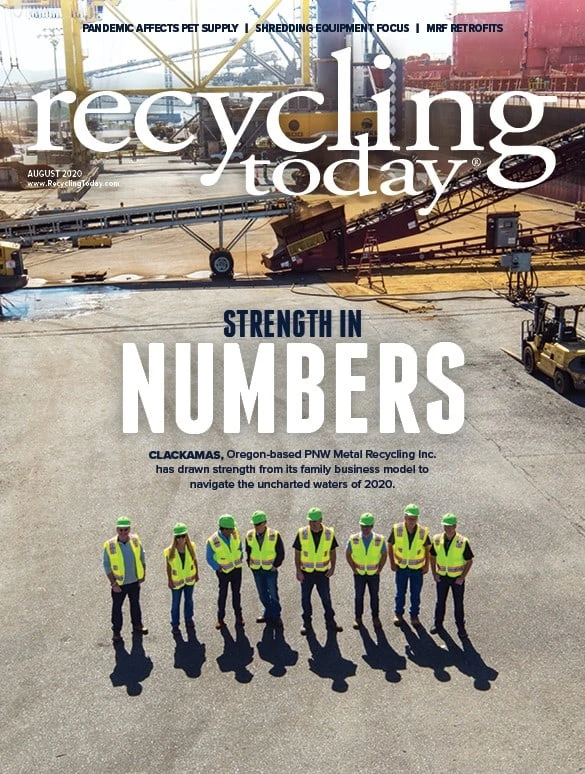After manufacturing activity was reduced in March and April related to social-distancing and shelter-at-home measures arising from the COVID-19 pandemic, industrial generation began to rebound in June and July. However, the rebound has been inconsistent across industries.
A processor in western Pennsylvania says his company’s overall nonferrous scrap intake is off 20 percent compared with the previous two years. “It’s a strange time for our industrials,” he says, adding that some industries, such as oil and gas, have been particularly hard hit.
The aerospace sector also continued to struggle as of mid-July, a source based in the Southwest says. However, he adds that the recreational vehicle industry is “on fire” as people invest in these vehicles as a safer alternative to travel amid the pandemic, which as of mid-July was surging in some areas of the country.
The Southwest-based source, who serves industrial clients throughout North America, says roughly 75 percent of generation has returned to pre-COVID-19 levels. Automakers are among the manufacturers that are rebounding, he says.
“The more the country comes back to normal, the more opportunity for material to enter back into the supply chain.” – a red metals processor based in the Midwest
When it comes to retail trade, the processor based in western Pennsylvania says, “Once peddler traffic resumed in [Pennsylvania], there was an initial surge from delayed contractor work, but now I feel the softness is from perceived low prices.”
While demand outpaced supply for a short time following the restart of manufacturing activity, that seems to no longer be the case, sources say.
“We saw early on a little tightness when plants started reopening,” the source in the Southwest says of aluminum scrap. “Now, there’s a surplus of aluminum. Spreads have widened in relation to the LME (London Metal Exchange). Appointments take a little longer to get. The price is not keeping up with the terminal markets.”

While he says delivery windows have narrowed somewhat compared with before the pandemic, some mills are not looking to take deliveries for orders placed in July until August or September.
“May and early June were difficult to get mill appointments as we seemed to have more issues with our material in April than in recent memory,” the western Pennsylvania-based processor says, adding “mills didn’t want the orders they took.”
In the red metals sector, a processor based in the Midwest says his company’s scrap intake declined by 50 percent in March and April. While he says generation has “gotten better” as of mid-July, it is still softer than normal. “The higher market has helped things,” he says, referencing the COMEX settlement price, which was in the $2.90 per pound range as of mid-July.
“The more the country comes back to normal, the more opportunity for material to enter back into the supply chain,” the Midwest-based processor says.
Copper scrap is in short supply, with the processor saying, “We’re all going after the same material. There is a squeeze on material and on margins. Margins are out the window in favor of finding material to satisfy consumer needs.”
However, he says mills have started to back off on their demands as of mid-July with prices in the range of $2.90.
“I think we’re range-bound for now until we have a better understanding of what manufacturing will look like in the second half of the year,” the source in the Midwest says.

Explore the August 2020 Issue
Check out more from this issue and find your next story to read.
Latest from Recycling Today
- Orion ramping up Rocky Mountain Steel rail line
- Proposed bill would provide ‘regulatory clarity’ for chemical recycling
- Alberta Ag-Plastic pilot program continues, expands with renewed funding
- ReMA urges open intra-North American scrap trade
- Axium awarded by regional organization
- Update: China to introduce steel export quotas
- Thyssenkrupp idles capacity in Europe
- Phoenix Technologies closes Ohio rPET facility





